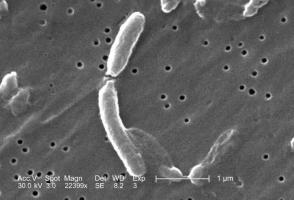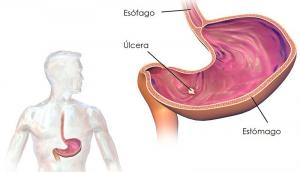Biogenetic elements: what they are, types and functions
All living beings on Earth are composed of organic matter. The basic structures that make up the different taxa (both animals and plants as well as microscopic organisms) are the cellulose, tannin, cutin and lignin, along with other proteins, lipids and sugars that build tissues and coatings cell phones. All this matter is not created as such from nothing, but is transformed through the energy flows of biogeochemical cycles.
Plants transform waste and inorganic matter into organic tissues from solar energy (photosynthesis), herbivores consume huge amounts of this matter and then the generated tissue passes to higher levels of the food chain, such as carnivores and super predators. When a living being dies, its tissues are broken down into matter and nutrients, which again become part of the plant vascular system by root absorption, thus closing the cycle.
In this way, we demonstrate with a series of general brushstrokes how organic matter and energy fluctuate in the different stratifications of an ecosystem. In any case, to know the functioning of living beings we must delve into a much more microscopic level, of atoms and molecules. Join us on this journey through
biogenetic elements, because in them is the key to life.- Related article: "The 10 branches of Biology: their objectives and characteristics"
What is a biogenetic element?
The very etymological root of the word can help us to introduce this term. In Greek, bio means life and genesis origin. Thus, it is easy to assume that the biogenetic element is the one that allows life, forming part of the tissues and / or metabolic pathways of living beings. Despite the fact that the living matter of the world is composed of about 25-30 biogenetic elements, only 8 of them are the most dominant and widespread throughout the taxa..
At this point, it should be noted that a chemical element is a type of matter made up of atoms of the same kind, with a certain number of nuclear protons in their simplest form. There are a total of 118 chemical elements on Earth, of which 26 have been obtained under laboratory conditions. Of the remaining 92, only 27 are considered bioelements (or biogenetic elements, interchangeable terms). Its classification is distributed as follows:
- Primary bioelements: they make up 96% of all living matter on Earth. Without them, existence on this planet could not be conceived.
- Secondary bioelements: they form 3.9% of living matter.
- Trace elements: they are also known as temporary bioelements, as their concentrations vary over time. They make up 0.1% of the total living matter.
What are the most important types of biogenetic elements?
As we have said, primary bioelements make up almost all matter that we know of. Therefore, we are going to focus on the 6 biogenetic elements par excellence (carbon, hydrogen, oxygen, nitrogen, phosphorus and sulfur), and then do a brief review of secondary bioelements and trace elements. Do not miss it.
1. Carbon (C)
Carbon is the bioelement or biogenetic element par excellence. It is estimated that the Earth harbors 550,000 million tons (550 Gt) of carbon on its surface, of which 450 Gt (80%) is stored in plant matter. Forests are not only the lungs of the planet, but they also represent the first energy reserve, in the form of plant biomass. After this group, it should be noted that bacteria contribute about 70 Gt to the earth's surface, despite their individual microscopic biomass.
As abundant as we are, it is incredible to know that human populations only assume 0.06 Gt of total planetary organic carbon. Paradoxically, this is the second most present element in our body (up to 20%), only surpassed by the oxygen that flows through all our veins, arteries and blood capillaries.

2. Oxygen (O)
Measured based on its total mass, oxygen is the third most present chemical element on Earth, second only to helium (He) and hydrogen (H). In any case, it is the most abundant if the limit is circumscribed in the earth's crust, since it forms more or less half of its mass.
Proteins, nucleic acids, carbohydrates, lipids and water contain oxygen, so it is essential for the construction of complex organic matter.. In addition, water (H2O) uses this biogenic element as a mainstay. Without O2, we are nothing.
- You may be interested in: "The theory of biological evolution: what it is and what it explains"
3. Hydrogen (H)
Hydrogen (H) is the first element on the periodic table for good reason: it is the most abundant biogenetic element on the whole Earth, since it accounts for 75% of all the visible mass in the universe. We are moving in figures incomprehensible to the human mind, but it is clear to us that almost everything present on the corporeal plane is, to a greater or lesser extent, hydrogen.
Hydrogen is not only part of living matter, but it is an element that is found in abundance in gaseous stars and planets. Under normal conditions, this biogenetic element occurs in the form of diatomic gas (H2).
4. Nitrogen (N)
Nitrogen constitutes 78% of the atmospheric air, which makes it the main component of the Earth's atmosphere. Within living beings, this element is essential for the formation of amino acids and nucleic acids. The former give rise to the proteins of all living solid tissues, while the latter are responsible for forming DNA and RNA.
In addition, nitrogen cycles in ecosystems are considered the most important, since this biogenetic element is the one that most favors plant growth under the right conditions. Without nitrogen, events as disparate as biological inheritance or dense forests would be impossible.
5. Phosphorus (P)
Phosphorus is another essential element for life, although it is found in a lower proportion than the rest in the gross computation of the land mass.
The phosphate group (of which it is a part) is essential for the synthesis of DNA and RNA, so, as with nitrogen, it is thanks to it that genetic inheritance occurs. It is also part of the lipid bilayer, the membrane that separates cells from the organic or inorganic environment that surrounds them.
6. Sulfur (S)
Sulfur is another of the essential biogenetic elements to understand life. It is part of the amino acids cysteine and methionine and, consequently, it is necessary for protein synthesis in all living beings on the planet.
7. Secondary biogenetic elements
Based on their concentrations in the tissues of living beings, these elements are considered secondary at the pure mass level, but just as important for the maintenance of existence. In this group, potassium, calcium, chlorine, magnesium or iron stand out, among others. For example, calcium is one of the essential elements for the formation of bone tissue in living beings, since 99% of the Ca in an organism is in the bone system.

- You may be interested in: "Bone system: what it is, parts and characteristics"
8. Trace elements
Despite representing only 0.1% of vital organic matter, trace elements are also necessary for life in small quantities. This includes cobalt, fluorine, chromium, copper, silicon, iodine and zinc, among others.. It should be noted that its absence in the body can be lethal, but its excessive presence as well. In atypical concentrations, they can cause liver toxicity.
Resume
As you can see, living beings are nothing more than atoms and elements invisible to the human eye, which are organized in a more or less complex way to give rise to all the life that we know. Human beings are almost 20% carbon, 60% water and, the remaining percentage (up to 99%), the other biogenetic elements mentioned. If any of them did not exist, the tissue organization that characterizes us would be impossible.
From the chromosomes of a cell to the Amazon forests, every level of living organization passes by the 6 main biogenetic elements: carbon, hydrogen, oxygen, nitrogen, phosphorus and sulfur. In the end, at the microscopic and basal level, all living things are reduced to the same thing.


